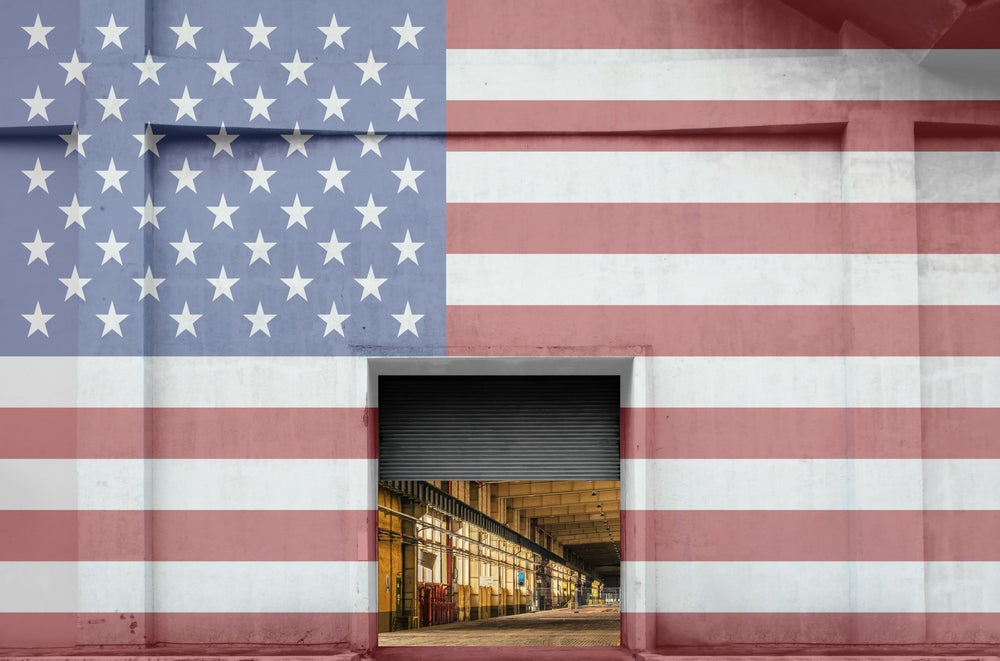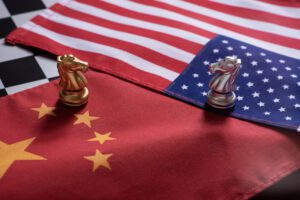The Trials and Tribulations of Trade

The loss of manufacturing in the United States is a long-running tale.
As a child of the American Midwest whose father worked in the steel industry, I have witnessed the decline of U.S. factories at close range. I remember visiting mills on the Southeast side of Chicago that were teeming with activity. Today, they are ruins that have been overtaken by native vegetation. The communities surrounding them have endured comparable decline and decay.
American leaders are now engaged in an effort to reverse the loss of manufacturing. The hope is to restore a path to prosperity for struggling regions and their residents. Tariffs are being employed liberally as a means to this end.
The endeavor seems noble. But success is far from certain, and the costs of achieving it could be substantial. A look at how we got to this point provides important perspective as we set a course for the future.
Not everyone agrees that American manufacturing is in decline. U.S. industrial output is near a record level, and has grown significantly during the past forty years. Shocks such as the 2008 financial crisis and the pandemic interrupted the upward trend.
Employment in manufacturing, however, began to stagnate in the mid-1960s. The United States was still a relatively closed economy then, and China was many years from becoming a global economic power. The advancing application of technology was the root cause of diminished labor demand at the time, and remains an important force today.
The newer the facility, the more likely it is to be heavily automated. Jobs created by new plant construction will require elevated skill levels, and may not be that plentiful. Reshoring may not provide the boost to factory employment that some are hoping for.
The decline in manufacturing jobs became much more pronounced as globalization advanced. Trust between nations steadily improved as memories of the Second World War receded, allowing the opening of markets and the establishment of global supply chains. Thanks to a series of major trade treaties, merchandise exports as a percentage of global gross domestic product (GDP) tripled between 1960 and 2008.
04/25/2025 | Carl Tannenbaum | Northern Trust
‘Made in America’ Is Not Enough

For years, policymakers have championed “Made in America” as a silver bullet for economic growth and supply chain resilience. In fact, as part of his tariff-focused trade policy, President Donald Trump has repeatedly called for more U.S. manufacturing investment, using heightened tariffs as a way to entice greater domestic development.
But tariffs alone will not rebuild American industry, especially overnight. U.S. manufacturing has been hollowed out over decades, with many companies offshoring production in search of lower costs and fewer regulations. As a result, we have lost not only factories, but also much of the upstream supply chains, skilled workforce and financial capital that once underpinned our industrial strength.
Thus far, the current administration’s rapidly changing positions, including a recent 90-day pause on broader tariff hikes alongside an increase in duties on Chinese goods to 125%, have only added costs for U.S. manufacturers that use imported materials and components — and increased overall uncertainty for U.S. businesses and global partners.
The president’s vision to bring back American factories and reignite domestic manufacturing resonates with communities hollowed out by decades of offshoring. But rebuilding that foundation in an era defined by far-flung supply chains and repeated disruption from pandemics, geopolitical shocks and natural disasters will take more than rhetoric and tariffs.
Let’s be clear: strengthening U.S. manufacturing is essential. For critical industries, robust domestic production is a matter of national and economic security. Take semiconductors, for example. A global shortage during the pandemic brought entire U.S. industries — from auto manufacturing to consumer electronics — to a standstill. With production concentrated in East Asia, companies and consumers alike felt the impact of a system dependent on a handful of suppliers.
04/17/2025 | Monica Gorman | Manufacturing Dive
The Tariff Tug-of-War: A Look at Protectionism and Free Trade Over Time

Every empire has used them. Every revolution has resisted them. Tariffs are the quiet trigger behind some of history’s loudest moments. They have been a cornerstone of economic policy throughout history, serving as powerful tools to protect domestic industries and steer international trade relations. Tariffs have continually evolved, shaped by the administrative innovations of ancient civilizations, the protectionist policies of colonial empires, and the modern debates surrounding globalization.
The early usage of tariffs set the stage for their continued impact on the global economy, leading us to the present day where they are still key players in trade disputes and economic policy. As we navigate the complexities of globalization, the historical lessons tariffs offer provide valuable insights into their potential successes and failures.
The concept of tariffs dates back to ancient civilizations, where rulers imposed taxes on imported goods to protect local economies and generate revenue. In ancient Egypt, tariffs were imposed on goods transported along the Nile River to protect local products and maintain their competitiveness. Similarly, the Roman Empire implemented tariffs to regulate trade and support domestic industries, fostering economic stability within the empire. Early records reveal that these taxes were closely entwined with state-controlled trade routes, underlining the administrative sophistication of these early societies. Many times, tariffs were codified into legal structures that balanced the revenue needs of the state with the interests of merchants. This foundation secured the financial stability of ancient regimes and served as a stepping stone for more intricate fiscal policies in later eras.
Tariffs gained new importance with the rise of European colonial empires in the 15th and 16th centuries. Nations, such as Spain, Portugal, and later England and France, established colonies to secure access to valuable resources and markets. To protect their colonial interests and maximize profits, these nations implemented tariffs on imported goods from rival empires. This mercantilist approach attempted to create a favorable balance of trade by limiting imports and promoting exports. Ultimately, it contributed to the wealth and power of the colonial empires.
04/29/2025 | Lucas Benjamin | The Science Survey
What President Trump’s “Reciprocal” Tariffs Mean for International (Trade) Law

When US President Donald Trump announced the imposition of “reciprocal” tariffs on virtually the entire globe on April 2nd, many observers felt that they were witnessing a historic event—the “end of globalization as we know it”, the starting shot to an economic calamity on the scale of the Covid-19 pandemic or, as the prime minister of Singapore put it, “a seismic change in the global order”. And it was indeed a momentous act: with the stroke of a pen, President Trump brought US tariffs up to a level last seen more than a hundred years ago, and higher even than the notorious Smoot-Hawley tariff of 1930 that is widely faulted for having deepened the Great Depression. The farcical way in which the new tariffs had been calculated—based on an misleading formula apparently suggested by ChatGPT—only added to the sense of bewilderment.
What should international (trade) lawyers make of these developments? As always, when international law faces a fundamental challenge, we are caught between utopia and apology. On the one hand, it sounds trite, almost naïve, to point out the obvious illegality of the tariffs under every trade agreement that the United States has ever concluded. On the other hand, are we really prepared to join the ranks of the cynics who wearily conclude that international trade law generally and the World Trade Organization (WTO) specifically do not matter anymore? And yet, neither the tariffs nor international trade law are going anywhere anytime soon, so it is important that we think about their relationship.
In this post, I will suggest that the new tariffs represent a qualitative change from the tariffs adopted by the first Trump administration and maintained by the Biden administration. The latter were merely illegal, while the former are antithetical to the very institution of international trade law. I will then argue that other countries should bifurcate their approach to international trade law in the context of the tariffs. They need to recognize that the United States has made itself an outcast in the international trade regime and treat it as such, while continuing to respect international trade law in their relationships with each other.
04/30/2025 | Nicolas Lamp | EJIL:Talk!
Senior Officials Must Push Trump, Xi to Negotiating Table

During his election campaign, Donald Trump conveyed his interest in visiting China during his first 100 days in office. Not only has this trip not materialised, even a phone call with president Xi Jinping has proven elusive. Instead of talking, both countries have quickly escalated their tit-for-tat tariffs. While both sides technically remain open to negotiations, a roadmap for getting there does not appear to be under discussion.
Yet as both countries feel the economic fallout from their trade war, the need to get the ball rolling on official talks becomes more urgent. In November, Trump will have the opportunity to meet his counterpart in person on the margins of either the G20 meeting in South Africa, or more likely the Asia-Pacific Economic Cooperation (Apec) leaders’ meeting in South Korea. Their top advisers can — and must — start building trust and working now to sow the seeds for a Trump-Xi meeting later this year to broker a compromise between the two.
Difficult but doable
While president Trump continues to assert that the US and China are talking, Beijing steadfastly denies this claim. By all counts, the US president is more interested in resuming engagement than his Chinese counterpart. Almost 60% of Americans disapprove of the administration’s tariff policy, putting it under pressure to show it will help the economy. Meanwhile Beijing has seen Trump back down on tariffs with other countries, and has prepared for a trade war since Trump 1.0.
The fact is that each side is currently busy with other partners. Chinese leadership is reaching out to US allies, portraying Beijing as the defender of the rules-based trading system while offering commercial incentives to further integrate their economies. US negotiators are trying to finalise as many trade deals as possible during the 90-day reciprocal tariff suspension. However once these talks come to a close, US trade officials must shift their focus to China.
Their close communication with senior Chinese officials is critical to get things moving. While difficult, this is doable. US trade representative Jamieson Greer, who will participate in the Apec trade ministers meeting in May, could share a private message with his Chinese counterpart on behalf of President Trump on US interest in re-engaging. Treasury secretary Scott Bessent could call Chinese vice-premier He Lifeng to discuss a multilateral matter, like IMF reform, and use the opportunity to signal the American desire to re-engage. This could lead to teeing up a scripted call between the two leaders, with them instructing their teams to develop terms of reference for a potential deal, which could then be announced in November.
04/29/2025 | Wendy Cutler | fDi Intelligence
WITA – We put the community in trade community.
Information about upcoming WITA and trade community events


